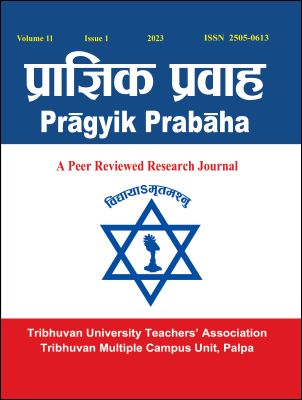Faces of Faceless in Tamang’s Paintings: Claiming for Identity
DOI:
https://doi.org/10.3126/pp.v11i1.55506Keywords:
Tamang community, cultural hegemony, marginalization, facelessness, identity claimAbstract
Correction: The name of the author was changed from 'Kumai' to 'Kumari' on 03/07/2023.
The Tamang community has endured long history of structural hegemony and marginalization. The Rana rulers not only denied their ethnicity, but also enforced them for free labor. The rulers imposed main stream Khas language and Hindu culture looking-down upon their indigenous culture, language and distinct way of life. Moreover, they were always pushed towards the periphery in terms of education, opportunity and the resource-use. Against this backdrop, this paper analyzes Subas Tamang’s paintings exhibited under the title Kaiten: History, Memory, Identity (2021). His paintings memorize atrocious and subjugated past of the Tamang community when they were treated nothing more than a working machine by the powerful local authorities and the rulers. I have focused on three paintings that memorize the Tamang’s history, predicaments and their ravished identity. For the theoretical backing, I have employed Stuart Hall’s concept of cultural studies, concentrating on the issue of representation.




